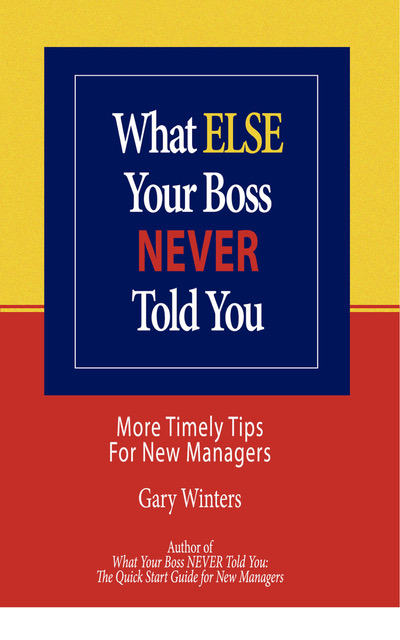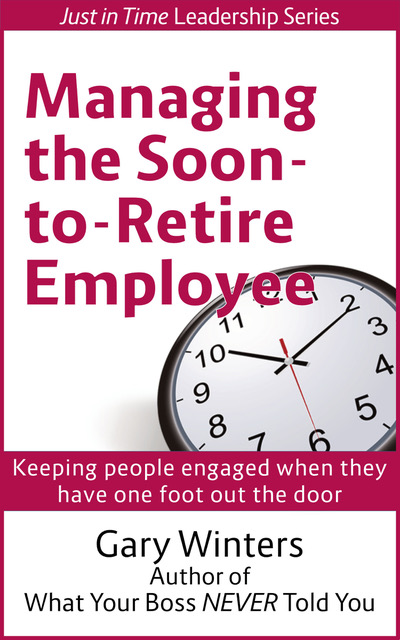 What would you say are the odds of three different people coming to you independently, seeking your advice, each with the identical dilemma? That’s what’s happened for me when three friends asked to “pick my brain” because they knew I was in the “leadership” and “management” business. None of these folks is a team leader, supervisor, manager, director, or other kind of boss. They’re employees – worker bees, and they wanted to check whether their bosses were, in fact, clueless – and if so, what they should do about it.
What would you say are the odds of three different people coming to you independently, seeking your advice, each with the identical dilemma? That’s what’s happened for me when three friends asked to “pick my brain” because they knew I was in the “leadership” and “management” business. None of these folks is a team leader, supervisor, manager, director, or other kind of boss. They’re employees – worker bees, and they wanted to check whether their bosses were, in fact, clueless – and if so, what they should do about it.
In my first conversation, “Susan,” (not her real name) described some challenges she was having on her new job, which she started in January. She works in a small organization, with about 25 employees. She said she began to get a bad feeling on the very first day, when she was barely introduced to a small handful of people, shown to her desk, and essentially abandoned the rest of the day. Wait – make that the rest of the week. No one invited her to lunch on that first day, no one went out of their way to introduce themselves, or to help Susan feel welcome.
At first she made excuses for her manager, and for the organization. “They’re just not ‘people-people,'” she thought. After a month, she realized she wasn’t sure who her boss was – and the guy she thought was her boss rarely spoke to her. When he communicated at all, it was usually by email, and typically to correct something he believed she’d done wrong.
The second friend to come to me, “Jill,” started telling her story and I nearly began to laugh – which would have been highly inappropriate! She had just started a job in December with an organization of about two dozen people. Unlike Susan, Jill knew who her boss was, because they share an office and sit about 3 feet apart from one another. But, just like Susan, Jill’s boss did nothing to orient her to the new job or acclimate her to her new colleagues. She, too, had a communication problem. Rather than turning to Jill and saying something out loud, she would email her. Email her! Jill went on to describe other challenges she faced – but her story was nearly a duplicate of Susan’s.
A few days later “Chris” came to me, also wanting to pick my brain. I don’t have to describe his story because you’re already read it – twice. New job, small organization, and a supervisor with few people skills.
What’s going on here?
The sad, rarely discussed challenge in the field of management and leadership development is that we’re not reaching, helping or developing a huge number of people who work in leadership roles in small organizations. They do not get formal training; they do not have mentor; theirs is a “learn on the job” path. They learn how to manage from their experiences of having been managed. Susan, Jill and Chris are left to fend for themselves and to deal with the fallout from poor leadership.
I’m talking about really, really basic management practices. Things like saying “Good morning!” every day. Things like saying, “Let’s get together and talk about goals and expectations.” Things like helping employees feel included, appreciated and respected. Since I work largely in much larger organizations where there is an emphasis on actually developing leadership talent, I don’t see these simple oversights very often.
I’m working with leaders who are working on their vision, their mission, and how to build a team, while thousands of people like Susan, Jill and Chris are wondering how the hell to get their boss to speak with them face to face. It’s sobering and disappointing.
I offered my advice to each of my friends, but what I told them is immaterial to this essay. Probably the best I could do was to assure them they weren’t crazy and they weren’t asking too much.
As it turns out, Susan gave her notice today (exactly three months after starting the job). Jill is planning to do the same in a few weeks. Chris is determined to hang in there, but he’s already developed a detachment from his job. It’s become something he does eight hours a day.
Management and leadership development professionals (like me) have got to find better ways to raise the caliber of leadership in the smaller (and often family-owned) businesses. Many of the leaders in these organizations have no clue how damaging they are to the people who report to them. I welcome your suggestions.
This article is the first of a series of 26 posts for the month of April called “Blogging from A to Z,” an idea first suggested by Arlee Bird of Tossing It Out.







